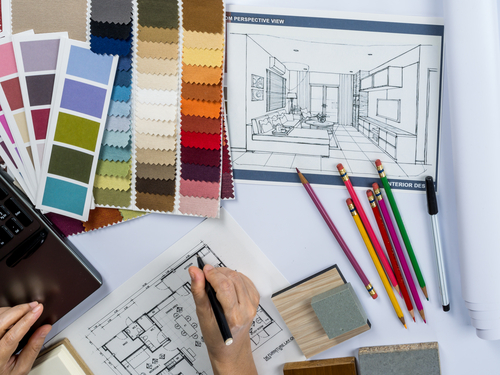The American Society of Interior Designers (ASID) has released its 2022 Trends Report, part one of the three-part Outlook Report revealing significant industry trends and implications, economic indicators, and shifts in the interior design profession.

Compiled by the ASID’s research and knowledge team, the report finds that health and wellness continue to dominate both residential and commercial design due to the lasting effects of the pandemic. Sustainability has also shifted from a nice-to-have to a must-have for designers and consumers alike. Additional highlights include:
Workplace wellness is a must for employees and businesses. Nearly a third of the full-time employees currently working from home say they would never come into the office during the week. To lure employees back to the workplace, businesses need to rethink their office design to provide environments that are meticulously clean and safe, but also less stressful.
The future of office design is evolving. As ways of working and employees’ attitudes toward work are changing, employers and designers are trying to figure out what the office of the future should look like. Emerging trends include allowing more freedom and flexibility to employees to design their own spaces, creating experience-based environments with more sensory inputs, the return of the private office, and providing more spaces that support team and interactive activities.
Hotels and resorts look to refresh and renew their interiors as they await the return of guests. Those in the hospitality industry are busy refreshing their properties to improve comfort and safety and to update aesthetics. Some current trends include replacing select textiles and wood with porcelain, glass, and composite materials. Also at the forefront are strategies that provide personal control of light and temperature, biophilia, and ergonomics. Statistically, wellness tourism is projected to generate $436 billion in 2022.
Wellness real estate outpaces other types of construction. Environments designed intentionally to protect and enhance occupant health and well-being comprise a growing portion of construction projects. Wellness features and healthy design will become nearly ubiquitous in luxury properties and in workplaces, with a growing emphasis not just on well-being but on improved human health. The total number of wellness-certified building projects worldwide from the two big players, The Well Building Standard (WELL) and Fitwel, have grown nine-fold in the last three years. Certifications have skyrocketed from 200 in 2018 to 952 in 2020.
The report showcases interior designers at a pivotal time in history in the profession, witnessing changes in technology, major demographic developments, and societal and attitudinal shifts. Designers will once again be called to serve and offer guidance as the industry evolves away from COVID-19 and into a new era of interior design.
The Trends Report is available for download here. Parts two and three of the ASID 2022 Outlook Report series, the Economic Outlook and State of Interior Design, will be made available via the ASID website and social media platforms later this spring.
